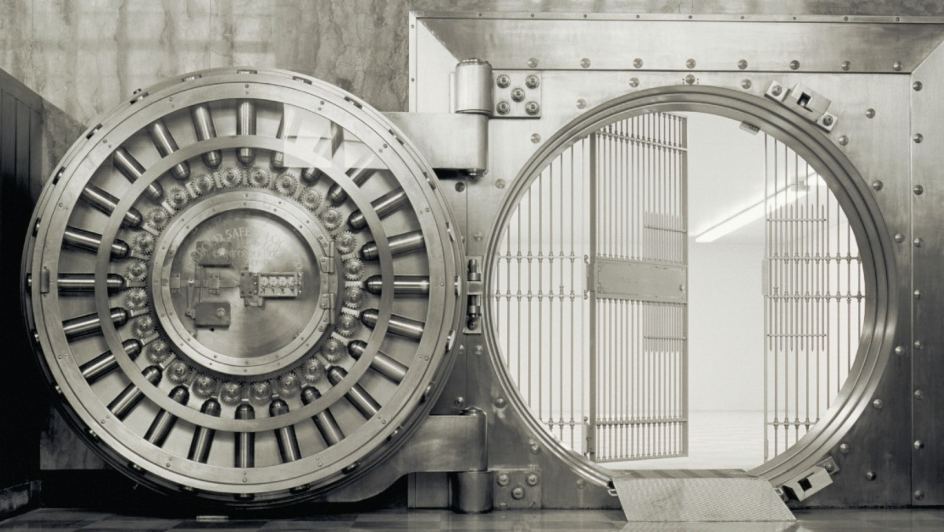#ThrowbackThursday – 8 June

If there was ever a day for the unsettling dramatics, it was clearly the 8th of June, when genre-defining dystopian books were released, supernatural films became public and mastermind criminals were able to slip away.
Curious? Let’s find out more…
1949 – A Not-So-Bright Future
“Nineteen Eighty-Four” – one of the most well-known dystopian novels of all time – was first released on 8 June 1949, by English author George Orwell as a warning against totalitarianism.
Eric Arthur Blair – better known by his pen name, George Orwell – wrote eight other books during his lifetime, including “Animal Farm” and “Homage to Catalonia”, which were widely praised. However, it was his ninth and final novel that would capture the minds of millions around the world and ring out as a warning for future generations.
Deeply concerned about the political trends unfolding at the time, Orwell is believed to have modelled the authoritarian state (named Oceania) in the novel on both Stalinist Russia and Nazi Germany. In doing so, he took authentic elements from both regimes – like extreme surveillance, civilians reporting on each other and contradictory slogans – and incorporated them into his work.
The crafty writer satirised a real political slogan from the Soviet Union: “2+2 = 5” – which had been a pledge to complete the nation’s industrialising Five-Year Plan in four years – and used it as an example of how an authoritarian state could make bold claims that contradicted with reality.
While it wasn’t the first dystopian novel ever released, the relatability of Orwell’s writing and its timely release ensured that it was quickly considered a vital part of any book-lover’s collection.
1984 – Who You Gonna Call?
Jump forward to the year 1984 and you’ll find a very different world than Orwell had envisioned.
Instead, people were enrobed in bright and colourful clothing, the cheerful “waka-waka” pac-man tune could be heard on just about every street corner and.. ghosts?
The supernatural comedy film, “Ghostbusters”, officially premiered on 7 June 1984, and was released just one day later, on 8 June, bringing rising actor Bill Murray into the hearts of many. The off-beat film, featuring a symphony of synths and plenty of gloopy green goo, followed three “eccentric parapsychologists” who did their best to save New York City, New York from being overrun by ghosts, demons and an assortment of other frightening creatures.
According to reports, the film grossed approximately $240 million in the United States of America and over $50 million internationally before it went on to inspire three sequels, one reboot as well as two spin-off television shows.
In the following years, plenty of subtle and not-so-subtle references to the franchise would be found in pop-culture, leaving everyone in the know with the iconic line: “Who you gonna call?” Which begs the enthusiastic response: “Ghostbusters!”
1989 – One Last Escape
Every country has an iconic story, one that’s recounted for years in a breath that’s mixed with admiration and bemusement. For France, it’s the greatest bank heist they had ever seen.
For many years, former soldier and photographer Albert Spaggiari was considered the mastermind behind breaking into the vault of the Société Générale bank in Nice, France on 16 July 1976 – a feat which many had thought was impossible.
Spaggiari and his men – who he had met while he was part of a right-wing group named Secret Armed Organisation – reportedly spent two months digging an eight-metre-long tunnel through the sewer below the vault floor. Together, the group stole money, securities and valuables worth an estimated 30–100 million francs, making it the largest heist in the history of bank robberies to that date.
According to reports, Spaggiari was arrested a few months later, in October, but dramatically escaped by jumping out of a window at the Marseille courthouse. The criminal “mastermind” evaded capture for the rest of his life, until 8 June 1989, when he was said to have died of lung cancer.
However, the story continued. In 2010, more than 40 years after the heist, Jacques Cassandri, a key mafia figure in Marseille, published a book under a pen name in which he portrayed himself as the brains behind the brawn of the bank heist. Cassandri had assumed that he was legally safe to unveil the mystery, as the statute of limitations on the heist had passed but prosecutors were able to pursue charges of money laundering, which he was eventually cleared of.
Image Credit: Source




















